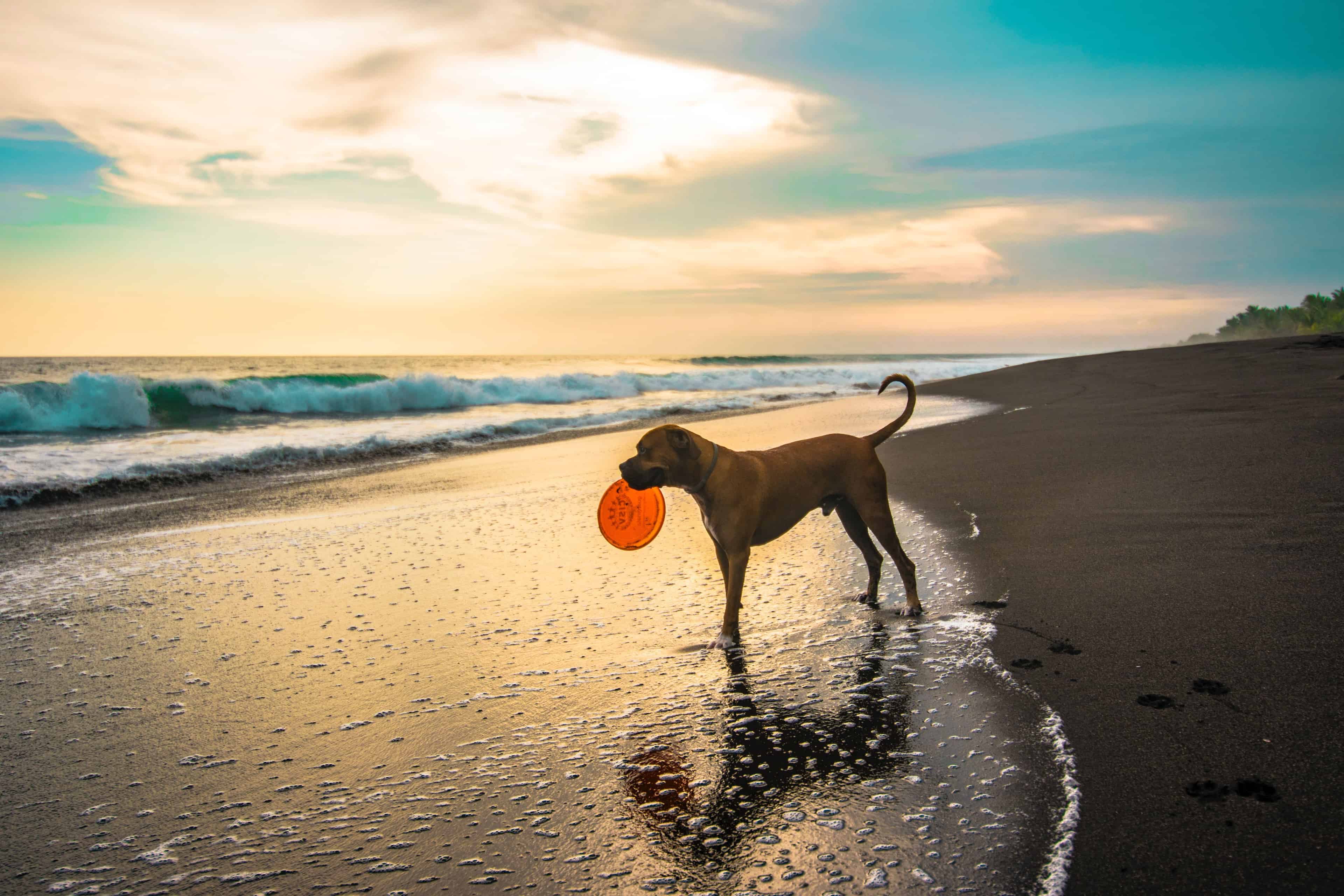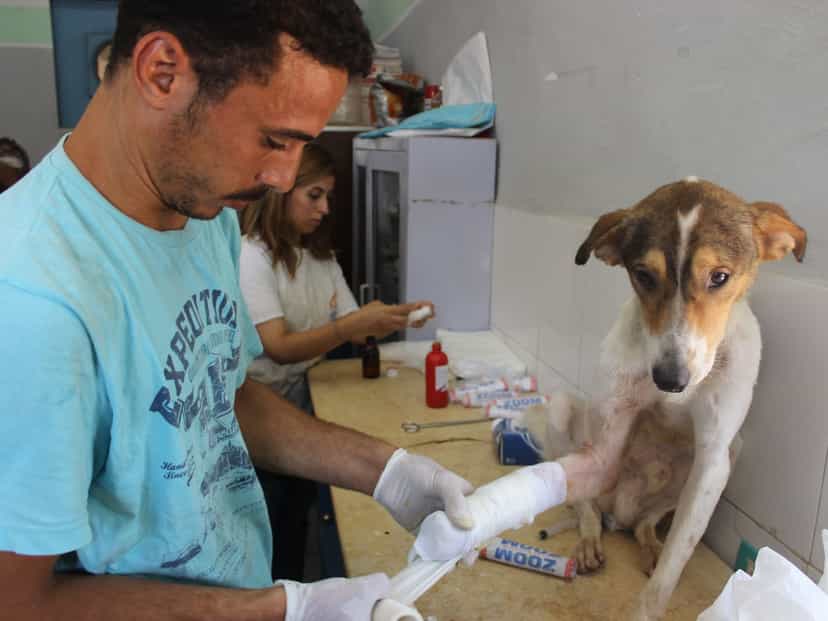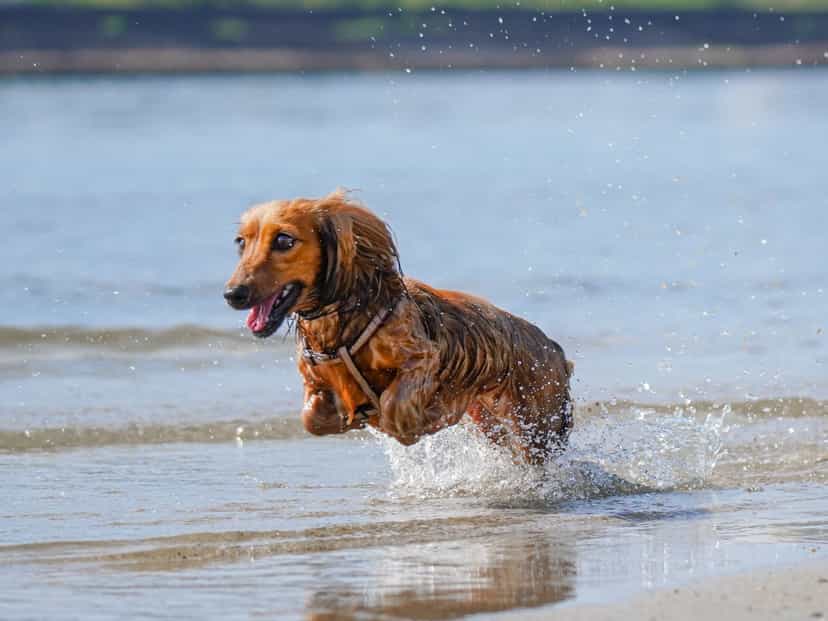
Most dogs love the beach but what should we be aware of that can harm our dogs? What happens if your dog eats sand? What should you take to the beach for your dog's well being? What is salt water intoxication? Why should you be careful with a beach barbecue? Our expert in Sussex, Kathy Hobson answers these questions and more in this informative article.
If you’re heading down to the beach this summer I’m sure you won’t forget the hats, sun lotion and drinks bottles, perhaps anti-histamines, after sun and bite/sting cream too. How do you keep your dogs safe though? What are the most common dangers, how can we try to prevent them, what are the signs and symptoms, and what should we do in the event of an accident/incident?
When people go to the beach they naturally want to enjoy the sunshine, play in the sand and the water. Whilst this is fantastic fun and valuable downtime with friends and family, it’s important to understand that there are some dangers to beware of, more so for dogs than for us humans. Dogs can’t control their body temperature as well as we can, they don’t understand the dangers and they can’t tell us when they feel unwell.
The most important thing is that your dog should be supervised at all times. This can
prevent many of the common problems such as getting into difficulties in the water or
stealing someone’s picnic, and means you’ll be able to spot any changes in behaviour
promptly. Always carry plenty of water. Dogs as well as humans will need to drink regularly when the weather’s warm and if they overheat you’ll need to use a lot of water to be able to cool them down.
The heat is always a risk factor for dogs, particularly if you’ve got a short-nosed (Brachycephalic) breed, a very young or old dog, an overweight dog or one with a heart or lung condition. They can become overwhelmed very quickly and Heatstroke is a killer.
There’s lots of information out there about this topic, we discuss it in depth on our courses and there’s a great blog on our website written by one of my colleagues.
The key symptoms of Heatstroke are excessive panting, drooling, very red and sticky gums, lethargy and an increased heart rate. Affected dogs may also have vomiting, diarrhoea and can even collapse or seizure. You should call the vet immediately. Remember that this can happen in temperatures as low as 18°C. It should also go without saying that you should never leave your dog in a car unsupervised. Many dogs still die every year from being left in a hot car. I think most people know the danger but many still don’t realise how quickly it can happen.

There are other heat-related dangers to look out for: Dogs can get sunburn the same as
humans, especially if you’ve got a pale coated dog with pink skin. Also check the heat of the sand and surfaces that they’re walking on as paws can easily get burned. Use the 5-second rule of placing the back of your hand on the surface and seeing if it’s still comfortable after five seconds.
Of course the safest thing to do is to avoid taking your dog out at the hottest time of the day, choose to go out early or late instead.
There’s something special about having a barbecue on the beach, but make sure that dogs are kept well away. They will smell extremely tempting to a dog, but a dog won’t
understand the danger and get can very seriously burned. Local vets see many such cases every summer.

Playing in the water is great fun and also a good way to stay cool, but it too has hidden
dangers. Strong currents can easily overwhelm a dog and dogs can get fatigued trying to keep up with their human playmates. As well as drowning there are the conditions of secondary drowning and water intoxication to be aware of. Both of these conditions are about too much water entering the body, but one affects the lungs and the other the digestive system.
Secondary drowning is where a dog inhales water accidentally into its lungs whilst playing and it can build up to a dangerous level whereby the lungs cannot function and the dog collapses, needing CPR in the same way as a dog who has drowned. Water intoxication is when the dog has drunk too much water. This is rare but can happen when a dog drinks a lot on a hot day and then accidentally drinks more during water play. This excess water upsets the body’s natural balance of minerals and electrolytes and can also be an extremely serious, even fatal, condition. Both of these issues can happen more quickly with salty water than with fresh water so you need to be particularly vigilant at keeping an eye on your dog when playing in the sea.

Another danger to look out for is bee and wasp stings, though these are not normally a
serious problem unless you’ve got a dog who is allergic to them. This is a rare condition, but anaphylaxis affects dogs in a similar way to humans and needs prompt action in taking the dog to the vet.
Picnics were mentioned earlier. Apart from being very annoying if a dog comes over and steals some of your picnic, there are many human foods which are toxic to dogs including grapes and raisins, chocolate and blue cheese which are common picnic foods.
Whilst it might seem like a good idea to play ball games with your dog to keep them and the kids entertained, there’s even a risk with that. A ball that gets wet from the dog’s saliva will collect sand that the dog may then swallow. There is then the rare but possible issue of sand building up in the dog’s intestines and causing impaction.
Tennis balls are the perfect size to get lodged in the throats of medium to large dogs,
especially considering the angle at which they jump to catch the ball. There are 4 different techniques which we can use to help a choking dog and they are not the same as with a human. We discuss these during our courses and I believe it’s one of those things that every dog owner should know. Choking is one of the first aid situations where you don’t have time to get to the vet. Your immediate actions can be the difference between life and death and no-one would want to feel that they should have known what to do but didn’t.
If your dog becomes unwell, especially if it is a sudden onset, contact your vet straight away and follow their advice. If you’re away from home make sure you do your research before you go – find out the details for the local vets and/or get a phone app to tell you where your nearest vet is. If you suspect poisoning, an alternative source of immediate help and advice is the Animal Poison Line on 01202 509000.


